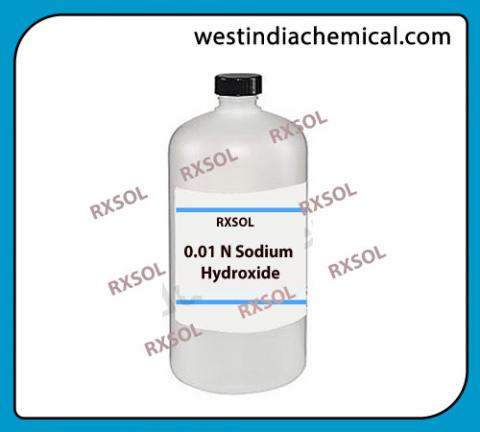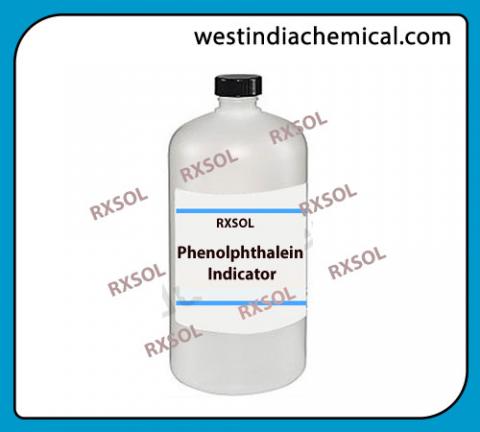Primary tabs


Acidity Water Test
SKU::RXSOL-60-5515-004
Test for acidity of water
Test for acidity of water. We are keeping ready stock of full range of WATER TEST KIT.
Procedure:
. 20 drops of water was taken in a dry test tube.
. Adding 1 drop of Phenolphthalein indictor to this tube.
. Adding sodium hydroxide drop by with a calibrated pipette till the colour changes from colourless to pink. Count the drops.
Calculation:
Volume of sodium hydroxide = no. of drops x drop value of pipette = V1 Volume of water = no. of drops of water x drop value of the pipette= V2 Normality of sodium hydroxide=N1
Total acidity (mg/L)= V1 x N1 x 100 x 1000/V2
Result: The acidity of the sample water is :__________
Estimation of acidity of water:
Reagents: 0.01 N sodium hydroxide, Phenolphthalein indictor
Also Refer this Link : http://rxmarine.com/free-mineral-acidity-using-titrimetric-method
Acidity Water Test manufacturer supplier distributor in Mumbai, Kandla, Kolkata, Vizag, Chennai, India, Fujairah, Dubai, Sharjah, UAE, Gulf, Middle East, Muscat Oman, Kenya Africa. Get the best quality of Acidity Water Test at a competitive price from us. We have ready stock of Acidity Water Test in India, UAE Gulf, Oman, Kenya Africa. Contact us for bulk as well as small orders.
1. Method of pH indicator
In this method, various indicators are used. An indicator develops a particular colour when added to the solution depending upon the pH of the solution. e.g. phenolphthalein, an acid-base indicator, is colourless below a pH of 8.3 and distinctly pink above pH 10.0. Thus, it shows distinctly different colours below and above a small pH range.
2. Electro motive force (e.m.f.) method or potentiometric method:
Here the e.m.f. of a cell, consisting of standard reference electrode and an electrode reversible to H+ ions is measured. As the H+ ion concentration changes, the values of e.m.f. of the cell change.
pH is then calculated from the observed values of e.m.f. of the cell or it may be obtained directly by using a pH meter.
The electrode whose potential is dependent upon the concentration of the ions to be determined, is termed as indicator electrode. There are various types of indicator electrodes e.g. hydrogen electrode, glass electrode, quinhydrone electrode etc. The choice of indicator electrode depends upon the type of reaction which is under investigation.
When H+ ions are involved or in case of acid-base titration, the indicator electrode which may be hydrogen electrode or some other hydrogen on responsive electrode like glass electrode is used.
Glass electrode consists of a very thin walled glass bulb blown at the end of the glass tube. The bulb contains an electrode which has a constant potential (e.g. a platinum wire coated with Ag/AgCl dipping in 0.1N HCl solution or a platinum wire dipping in 0.1N HCl solution saturated with quinhydrone.) When the glass surface of the bulb is kept in contact with a solution, it acquires a potential which depends upon H+ ion concentration of the solution.
The pH meter is essentially a voltage measuring device so designated that it can be used with cells of high resistance (e.g. glass electrode which has a very high resistance and a standard calomel electrode as the reference electrode).
There are two common types of pH meters, one is potentiometric and second is direct reading type.
The operating instructions vary from instrument to instrument. The general procedure for a typical instrument is given below.
General procedure
It includes the following steps:
I. Preparation of standard buffer solutions
For acidic range having a pH 4.0 at 25 0 C :
1.021g of potassium hydrogen phthalate (or specific standard buffer tablet) is dissolved in a minimum quantity of distilled water (the solution may warmed if necessary). The solution is cooled and dilute to 100 ml with distilled water in a standard measuring flask and shake well.
2. For alkaline range having a pH of 9.2 at 25 0 C :
0.381 g of borax (or the standard buffer tablet) is dissolved in a minimum quantity of distilled water ( the solution may be warned if required ).The solution is cooled and dilute it to 100 ml with distilled water in a standard measuring flask and shake well.
II. Preliminary setting of pH meter
1. The electrodes are washed with distilled water. Washing is done with the help of a polythene wash bottle. Dry the electrodes carefully of by absorbing the water drops with the help of filter paper.
2. Fix both the electrodes in the electrode clip and connect them to proper terminals ( sometimes there is only one combined electrode in incorporating both the electrodes ).
3.The range selector is kept at a the zero position ( or in stand by position ).
4. Switch the instrument on and then wait for a few minutes.
5. At this stage, the pointer on the scale should read pH 7 ( or 0 mV ). If thepointerisnotonpH7(or0mV),thansetthepointer toreadpH7 by turning the set zero control.
III. Standardisation or Calibration of pH meter
1. Take the standard buffer pH 4.01 solution in a clean 100 ml beaker. The electrodes are carefully lowered in this solution ( about one inch deep ).
2. Measure the temperature of the solution and set the temperature compensate control at measured temperature.
3. Set the range selector switch to pH range 0 – 7 position.
4. At this stage, reading in the scale should indicate pH of the buffer solution i.e. pH 4.01. If it shows other reading, then bring the pointer to 4.01, by turning the set buffer control knob. This is the standardisation of pH meter in acidic rang.
5. Remove the electrode from buffer solution and wash them thoroughly with distilled water.
6. Take a standard buffer ( pH 9.2 ) solution in a clean 100 ml beaker. Dip the cleaned electrode in this solution ( about one inch deep ).
7. Measure the temperature of the solution and set the temperature compensate control at measured temperature.
8. Set the range selector switch to pH range 7 – 14 position. Pointer on the scale, should show 9.2 pH value.
9. If it shows other reading, then bring the pointer to 9.2 by turning the set buffer control konb to 9.2.
10.The range selector switch is turned back to zero (or stand by) position immediately.
Test for pH of water
. Sample of water was taken in a beaker.
. Taking a pH paper strip and, holding with forceps, dip one end into the water.
.Compare the colour of the pH paper strip with the pH colour chart and find the pH of the sample.
Result: The pH of the sample is ______________




